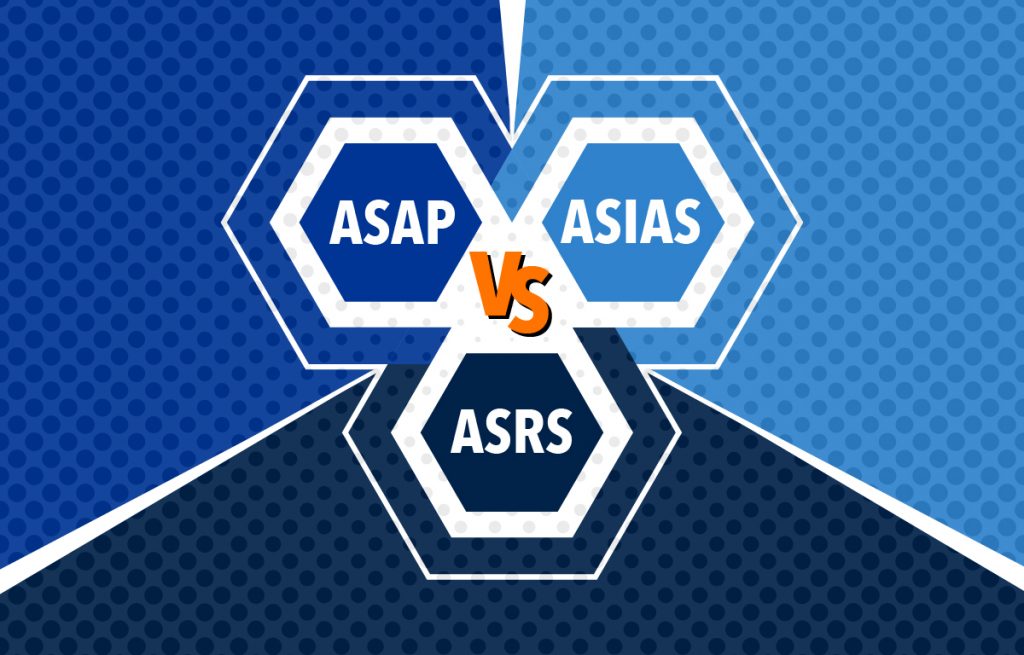ASAP, ASIAS, and ASRS – even their names are similar. What are the differences between these three safety reporting programs? Which one should you be using? Why should you be considering them? Discover how to use these programs to elevate your organization’s safety culture to the next level.
The three safety reporting programs in a nutshell
Although these safety reporting programs are similar and overlap at times, there are differentiating factors that will influence your reporting. The general concept of the three programs is to report any observed incidents or hazards while operating aircraft or performing other flight department duties.
- ASAP
Best for: Getting useful third-party insights on safety issues and potential protection from enforcement actions.
The Aviation Safety Action Program (ASAP) was created by the FAA with the goal of providing aircraft operators, pilots, and maintenance technicians the opportunity to submit safety reports in order to prevent future accidents and incidents. Once a report is submitted, an event review committee consisting of the operator, employee group, and FAA personnel, work on discerning the root cause of an event and recommending and implementing corrective actions.
ASAP should be used to augment an operator’s Safety Management System by providing participants with an external perspective on reported issues.
Additionally, provided there isn’t evidence of criminal activity, alcohol, drugs or reckless conduct, corrective actions (such as additional training or SOP updates) will be favored in lieu of any enforcement action. However, this only applies if the individual(s) voluntarily submits a report to ASAP by following the reporting guidelines.
ASAP reporting can be facilitated through a third-party. Some third-party facilitator submission programs also let you submit the data to both ASIAS and ASRS, allowing you to participate in all three programs with one submitted form.
- ASIAS
Best for: Keeping up to date with the latest safety issues and helping to improve the industry as a whole by sharing and receiving safety data.
The Aviation Safety Information Analysis and Sharing (ASIAS) program, also created by the FAA, was originally designed for use by the airlines with the objective of sharing safety data. Today, more and more Part 135 and Part 91 operators are getting into the habit of sharing information through ASIAS and now outnumber the participating commercial air carriers.
ASIAS mainly acts as a safety repository that others can view, though you have to be a member to see the full details. It compiles data from many different reporting systems, including ASAP and ASRS. This way, members can follow and identify safety trends on a much broader scale.
Data submitted to ASIAS is protected and non-punitive, as long as the person submitting it was not violating any laws or acting recklessly.
- ASRS
Best for: Helping to shape the future by anonymously submitting observed or experienced safety issues so the data can be used to research and develop improvements for the aviation industry.
The Aviation Safety Reporting System (ASRS) is a NASA-funded program with the aim of providing a platform to anonymously submit information such as safety reports and hazard incidents. The data collected is used by NASA to publish basic reports, facilitate research studies, and create newsletters for operators: CALLBACK and ASRS Directline.
ASRS works towards maintaining and improving aviation safety by acting on the information received from reports. It identifies system deficiencies, as well as issues alerts so the industry can develop new solutions to safety concerns.
A common misconception about ASRS is that reporting grants immunity to FAA enforcement on breaching regulations. While the FAA can’t use the ASRS report against the pilot, the FAA can still file a violation in the pilot’s records. However, submission of an ASRS report may allow the pilot to avoid a civil penalty or certificate action if the report is submitted in accordance with the guidelines in Advisory Circular AC 00-46E and the pilot has not committed any previous violations in the past five years.
Why would you use a safety reporting program?
- Continuous improvement and protections.
Many operators upload their data to all three safety reporting programs to cover all their bases. All three programs offer some form of regulatory protection, making the initiatives more improvement-based rather than punitive. By self-reporting, it can show that the operator truly values safety and is committed to continuous improvement.
- Gain insights from shared knowledge.
The more data that goes into the safety reporting programs, the more there is to share with pilots and operators. Although different operators may use different programs, they’re still flying in the same airspace. If a certain area is experiencing an uptick in issues such as drone encounters, pilots can provide a heads up to their colleagues to prevent further incidents. The data and bulletins provided by the programs can be used to help prepare safety meetings or company training.
- Help the industry.
Submitted data can be used to track industry trends and monitor airports and flight routes. This data can help your fellow operators as well as further the development of new safety related technologies and procedures by OEMs and the FAA.
ARC, our safety management system software, has a specific form for the ASAP program that is facilitated by the Air Charter Safety Foundation (ACSF). When you submit the form, it goes directly to ACSF, who in turn, passes it on to ASAP. Contact us if you would like to know more about ARC and how this SMS app could work for you.
Program Comparison
| Aviation Safety Action Program (ASAP) | Aviation Safety Information Analysis and Sharing (ASIAS) | Aviation Safety Reporting System (ASRS) | |
| Best for: | Getting useful third-party insights on safety issues. | Keeping up to date with the latest safety issues and helping to improve the industry as a whole by sharing and receiving safety data. | Helping to shape the future by anonymously submitting observed or experienced safety issues so the data can be used to research and develop improvements for the aviation industry. |
| How it works: | Must join the ASAP program to submit. Submission is done through an operator program, often managed by a third-party. ASAP providers may also have a system to submit the ASAP report information to other safety reporting systems, including ASIAS and ASRS. | Must join the ASIAS program to participate. Submission is done through the FAA ASIAS. | No sign-up required. Form can be submitted directly from the NASA ASRS website. |
| Access to data: | Fully sanitized. Data is available to participants of the program. | Partially sanitized – N-numbers are still reported. General Public: Limited information from the past 10 business days. Participants: More thorough data, including crewmember reports, according to the ASIAS website. | Fully sanitized. Data is available to the general public. ASRS publishes free newsletters and safety publications. |
| Protections: | Granted so long as the corrective action(s) suggested by the event review committee is followed and they are not a result of criminal activity or reckless behaviour. | No enforcement action solely based on an ASIAS report, so long as there are no criminal or negligent actions. | No enforcement action solely based on ASRS reports, so long as there wasn’t an aircraft accident and no criminal or negligent actions. ASRS reports typically protect the pilot from penalties when a covered report is submitted, but a violation may still be filed for that pilot. |



